
Question: What’s the connection between Ana Mary Robertson Moses and Imelda Marcos? Lots, if we’re talking about the 15 paintings bought by the former First Lady from the Armand Hammer collection during the 1970s. (On the side: When the Armand Hammer gallery moved to its new home in 1980, they opened the gallery with an exhibit of the works by the revered American folk artist.)
These paintings and more oddities pepper these two houses in an old district in Manila. Upon the invitation of a friend, I was able to finally enter these buildings that were probably constructed in this area in the 1800’s. For the sake of secrecy by which I am bound by this truly privileged visit, I will hereby refer to these houses as T.A.H. and the T.H.
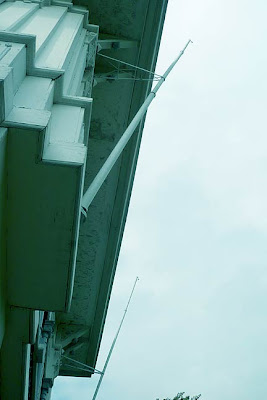
These former State Guest Houses have enough treasures to send your jaw dropping to the original kamagong floor, which is so tough nails cannot penetrate it. I cannot even start to list down the things that we saw there. One really needs to pause to take in all the grandeur that these houses possess. In fact, they are simple in their layouts, nothing very special except for the turret in the TAH that served as a lookout for pirates when this area was still thickly wooded. Otherwise, anybody who has visited the grand old houses of Carcar in Southern Cebu or the last remaining bahay na batos in San Fernando and Mechico (Mexico) in Pampanga would find themselves “at home” in both TAH and TH. What bring these two houses to the highest level of attention are the treasures they hold. Everything is European as is the tradition by Filipinos during the Spanish period. The Casa Manila Museum, although hardly original, is the best example of this. Over 100 years after the Spanish rule ended, we still have a taste for European opulence – heavy drapes and chandeliers are still the order of the day in many a modern home, but when you come face to face with a mammoth Baccarat chandelier, you know that this is not an ordinary house.
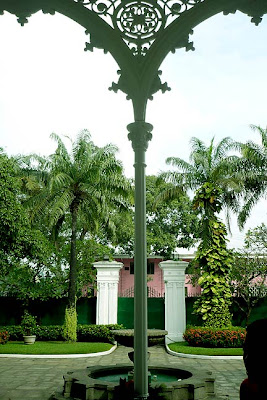
Needless to say, the interiors of these houses can be quite unsettling for the first timer or to those not used to excessive opulence that can be seen all in one place. There appears, however, a sense of forced decoration in this mansion. The boiseries, a completely European architectural tradition, looked like the gildings were just glued to the flat wall and not carved panels. We don’t really know what this place looked like before architect L. L. worked his magic on it, but we can only imagine. After all, what was TAH before the 1971 renovation but a simple family residence and a factory for hair products?
The air-conditioners are running every day except perhaps at night. This is to protect several pieces that are artifacts in themselves. To begin with, upon entering the house, a seemingly non-descript cabinet to your right turns out to be made of ebony and when opened actually is a triptych that reveals dozens of figures depicting the persecution of Christians in Europe – in pure ivory. At 200 years old with Southern Germany as its probable provenance, it is said to be priceless.
In the first room we visited, the walls were filled with Chinese pottery and jade (white, in its purest form) which were unearthed in Calatagan and Sta. Ana (Manila?). A close inspection revealed them to be from the Sung dynasty. On the floor in a corner stand a meter-high Khmer Buddha (8th century). From the now-empty library to the hallways, the house is peppered with tables inlaid with amethyst (Florence) or / and other stones you’ve only heard or read about in science books.

The couches in the foyer are covered in gold leaf and were recently re-upholstered. Immediately, lamps and crystal vases (all Lalique) can be seen on the side and center tables. One is immediately drawn to a hallway that leads to the grandest staircase I’ve ever seen, the landing of which is already the size of a studio room (or so noted my companion). “They don’t make staircases these grand anymore,” says our guide. As is the tradition, a dolphin table can be seen in the second landing. It is said that no respectable house in the olden days will do without a dolphin table.

The huge chandelier in this area and those in the tea and dining areas are made from several hundred pieces of capiz shells (“Just like those in the CCP,” observed O.M.W.). They’re probably the only Philippine-made items in this house aside from the woodwork. After all, the filigreed balustrades (Alhambra style) that you see on the balcony are made from palladium steel and were shipped from Belgium. Yes, you are correct. The same kind of steel used in the spires of the San Sebastian Church on Legarda. The dining table is entirely French Empire as are the vases lining the walls. Two jars on the doorway feature the wedding and coronation of Napoleon. A nearby cabinet holds the former First Lady’s collection of demitasse cups. Further down the hall of the second floor, a jewelry box caught my attention. Austrian in origin, its little columns are made of lapis lazuli (originally mined only in Afghanistan) with several panels painted with scenes of the Nord-Pas-de-Calais. On this floor can be found large panels of Flemish tapestries as well as an impressive vaulted ceiling (steel, made to look like wood), as well as several gifts from visiting statesmen or guests like the mottled-marble vases that were gifts from the Princess of Morocco.
And then the Grandma Moses paintings appear into view…
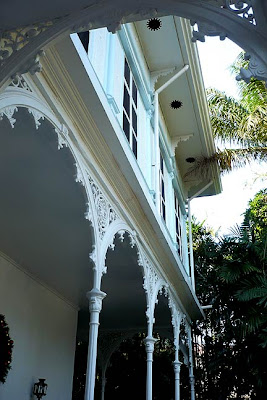
The total cost of these works by the American artist is kept a secret. It is enough to know that this house holds the world’s largest private collection of Grandma Moses paintings. There are at least two paintings in each bedroom aside from the fact that an ivory crucifix hang at the head of every bed. The paintings seem to be out of place in this whole setup though – American countryside meets idyllic French gardens. One can only shake one's head at the thought.
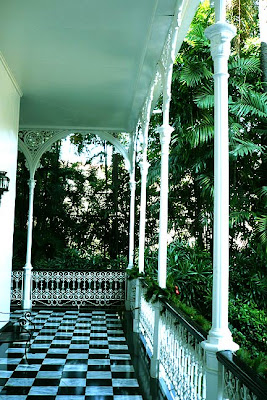
Some of the former residents include Rear Admiral Don Patricio Montojo y Pasaron, US Naval Commander George Dewey, General Douglas McArthur (who was said to have established in this house the first Philippine police headquarters). Among those who spent their nights here were George Hamilton (but of course!), Indira Gandhi, Kurt Waldheim (UN Secretary General, 1972-1981), and Their Majesties, the King and Queen of Spain.

A bridge of sorts connects the TAH to the TH. Upon entrance to the second floor, you are blown away by a series of chandeliers that lend a most luxurious glow to the Philippine hardwood that makes up this second house. The wall is lined with four levels of antique silver plates, bowls and utensils. A smaller wall holds a collection of fine china. Another wall holds a huge, multi-paneled Chinese screen of coromandel. There are 17 bedrooms in this second house and each bed, like those in the TAH, are covered in piña fabric. Several cabinets actually open, not to skeletons, but to hidden toilets and baths. Very ingenious and novel. A bedroom holds an Ah Tay bed (a rarity given that most of the beds here are European in origin). Chinese artisan Eduardo Ah Tay’s beds were a status symbol for the 19th century mestizo elite.
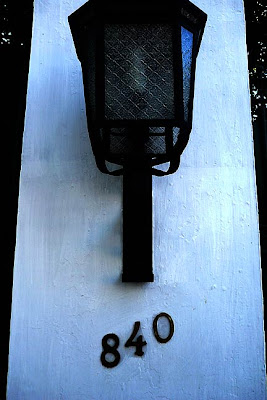

This is where the mammoth Baccarat crystal chandelier is found hanging over the staircase, which was definitely not as grand as that of the TAH. It is said that to clean it, it has to be dismantled per crystal. I really hope it is insured.
After a whirlwind visit through the entire second floor, we returned to the TAH and exited out into the driveway where we took photos of the facade.
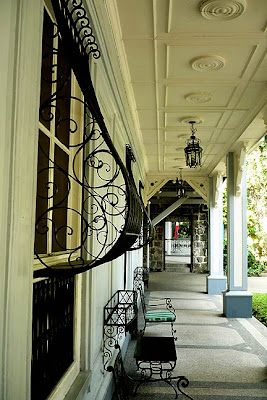

It was only outside the houses did I totally understand why it is not allowed to take photos of the interiors. There is a sensibility that must be protected – that of the Filipino people’s – because a lot of these things were bought by government funds and the memories of the Marcos excesses are still fresh in many minds.
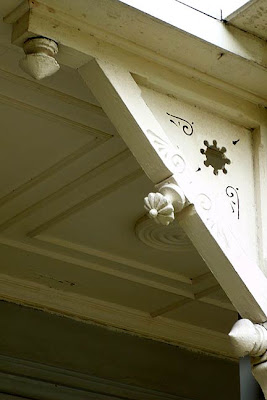
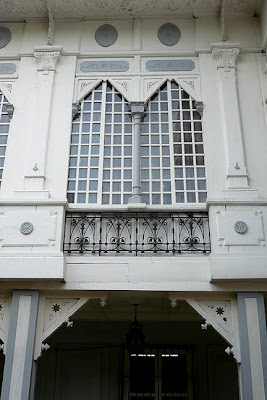
I texted my former Bayan Muna-member friend on how long does she think the Republic would be able to keep all of these a secret before an actual looting occurs, she replied thus, ”Well, if it comes out, it would cause a huge scandal and all the money hungry, the crass social climbers, and zealous will come out of the woodwork. Such a waste of good art. (Bleep) should make it a museum just like what China did to the Emperors’ treasures to prevent it from being looted or lost.”
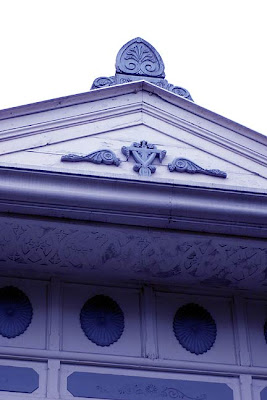
Indeed, it’d be a waste to lose all of it, although it’s hardly Filipino patrimony (a lot of Filipiniana are found in private collections, museums abroad, or in the basement of the Metropolitan Museum of the Banko Sentral among other places), these houses and their contents are a gift from the world to our people and enrich us and our history, quite literally, in a manner of speaking.
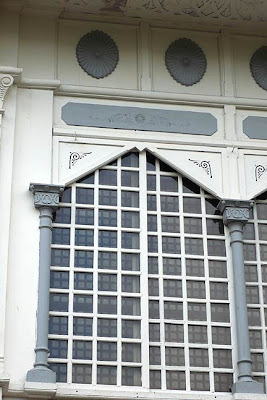
The whole affair reminded me so much of Marie Antoinette’s intimate refuge in Versailles, the Petit Trianon, a wedding gift to the teenage Princess from Louis XVI. Both these houses – the Petit Trianon and the TAH-TH duo – stand under the shadows of great symbols of power. What these Manila houses lack, however, is a wide expanse of garden. It would have been quite a sight to see them smack right in the middle of one. One is given to wishful thinking though if only other old houses and buildings in Manila and elsewhere could receive this kind of attention and care. Sigh. We all know this is not meant to be.
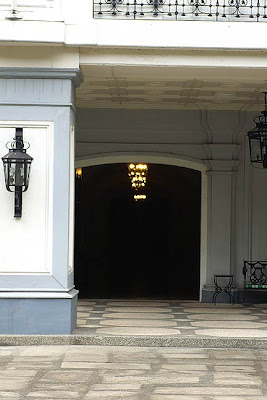
The President of the Philippines herself was said to have remarked that the TAH is so much better than the Blair House, the official guest house of the United States of America, and she would have wanted Bush to stay here had he stayed longer during his 2003 visit (“Para maipagmayabang”, quips our guide). Anyway, I absentmindedly asked our guide what the foreign visitors said, if anything, when they visited these houses. She replied, “What are these houses compared to what they have in Europe? These are nothing!”
And with that I end my story.
These paintings and more oddities pepper these two houses in an old district in Manila. Upon the invitation of a friend, I was able to finally enter these buildings that were probably constructed in this area in the 1800’s. For the sake of secrecy by which I am bound by this truly privileged visit, I will hereby refer to these houses as T.A.H. and the T.H.

These former State Guest Houses have enough treasures to send your jaw dropping to the original kamagong floor, which is so tough nails cannot penetrate it. I cannot even start to list down the things that we saw there. One really needs to pause to take in all the grandeur that these houses possess. In fact, they are simple in their layouts, nothing very special except for the turret in the TAH that served as a lookout for pirates when this area was still thickly wooded. Otherwise, anybody who has visited the grand old houses of Carcar in Southern Cebu or the last remaining bahay na batos in San Fernando and Mechico (Mexico) in Pampanga would find themselves “at home” in both TAH and TH. What bring these two houses to the highest level of attention are the treasures they hold. Everything is European as is the tradition by Filipinos during the Spanish period. The Casa Manila Museum, although hardly original, is the best example of this. Over 100 years after the Spanish rule ended, we still have a taste for European opulence – heavy drapes and chandeliers are still the order of the day in many a modern home, but when you come face to face with a mammoth Baccarat chandelier, you know that this is not an ordinary house.

Needless to say, the interiors of these houses can be quite unsettling for the first timer or to those not used to excessive opulence that can be seen all in one place. There appears, however, a sense of forced decoration in this mansion. The boiseries, a completely European architectural tradition, looked like the gildings were just glued to the flat wall and not carved panels. We don’t really know what this place looked like before architect L. L. worked his magic on it, but we can only imagine. After all, what was TAH before the 1971 renovation but a simple family residence and a factory for hair products?
The air-conditioners are running every day except perhaps at night. This is to protect several pieces that are artifacts in themselves. To begin with, upon entering the house, a seemingly non-descript cabinet to your right turns out to be made of ebony and when opened actually is a triptych that reveals dozens of figures depicting the persecution of Christians in Europe – in pure ivory. At 200 years old with Southern Germany as its probable provenance, it is said to be priceless.
In the first room we visited, the walls were filled with Chinese pottery and jade (white, in its purest form) which were unearthed in Calatagan and Sta. Ana (Manila?). A close inspection revealed them to be from the Sung dynasty. On the floor in a corner stand a meter-high Khmer Buddha (8th century). From the now-empty library to the hallways, the house is peppered with tables inlaid with amethyst (Florence) or / and other stones you’ve only heard or read about in science books.

The couches in the foyer are covered in gold leaf and were recently re-upholstered. Immediately, lamps and crystal vases (all Lalique) can be seen on the side and center tables. One is immediately drawn to a hallway that leads to the grandest staircase I’ve ever seen, the landing of which is already the size of a studio room (or so noted my companion). “They don’t make staircases these grand anymore,” says our guide. As is the tradition, a dolphin table can be seen in the second landing. It is said that no respectable house in the olden days will do without a dolphin table.

The huge chandelier in this area and those in the tea and dining areas are made from several hundred pieces of capiz shells (“Just like those in the CCP,” observed O.M.W.). They’re probably the only Philippine-made items in this house aside from the woodwork. After all, the filigreed balustrades (Alhambra style) that you see on the balcony are made from palladium steel and were shipped from Belgium. Yes, you are correct. The same kind of steel used in the spires of the San Sebastian Church on Legarda. The dining table is entirely French Empire as are the vases lining the walls. Two jars on the doorway feature the wedding and coronation of Napoleon. A nearby cabinet holds the former First Lady’s collection of demitasse cups. Further down the hall of the second floor, a jewelry box caught my attention. Austrian in origin, its little columns are made of lapis lazuli (originally mined only in Afghanistan) with several panels painted with scenes of the Nord-Pas-de-Calais. On this floor can be found large panels of Flemish tapestries as well as an impressive vaulted ceiling (steel, made to look like wood), as well as several gifts from visiting statesmen or guests like the mottled-marble vases that were gifts from the Princess of Morocco.
And then the Grandma Moses paintings appear into view…

The total cost of these works by the American artist is kept a secret. It is enough to know that this house holds the world’s largest private collection of Grandma Moses paintings. There are at least two paintings in each bedroom aside from the fact that an ivory crucifix hang at the head of every bed. The paintings seem to be out of place in this whole setup though – American countryside meets idyllic French gardens. One can only shake one's head at the thought.

Some of the former residents include Rear Admiral Don Patricio Montojo y Pasaron, US Naval Commander George Dewey, General Douglas McArthur (who was said to have established in this house the first Philippine police headquarters). Among those who spent their nights here were George Hamilton (but of course!), Indira Gandhi, Kurt Waldheim (UN Secretary General, 1972-1981), and Their Majesties, the King and Queen of Spain.

A bridge of sorts connects the TAH to the TH. Upon entrance to the second floor, you are blown away by a series of chandeliers that lend a most luxurious glow to the Philippine hardwood that makes up this second house. The wall is lined with four levels of antique silver plates, bowls and utensils. A smaller wall holds a collection of fine china. Another wall holds a huge, multi-paneled Chinese screen of coromandel. There are 17 bedrooms in this second house and each bed, like those in the TAH, are covered in piña fabric. Several cabinets actually open, not to skeletons, but to hidden toilets and baths. Very ingenious and novel. A bedroom holds an Ah Tay bed (a rarity given that most of the beds here are European in origin). Chinese artisan Eduardo Ah Tay’s beds were a status symbol for the 19th century mestizo elite.


This is where the mammoth Baccarat crystal chandelier is found hanging over the staircase, which was definitely not as grand as that of the TAH. It is said that to clean it, it has to be dismantled per crystal. I really hope it is insured.
After a whirlwind visit through the entire second floor, we returned to the TAH and exited out into the driveway where we took photos of the facade.


It was only outside the houses did I totally understand why it is not allowed to take photos of the interiors. There is a sensibility that must be protected – that of the Filipino people’s – because a lot of these things were bought by government funds and the memories of the Marcos excesses are still fresh in many minds.


I texted my former Bayan Muna-member friend on how long does she think the Republic would be able to keep all of these a secret before an actual looting occurs, she replied thus, ”Well, if it comes out, it would cause a huge scandal and all the money hungry, the crass social climbers, and zealous will come out of the woodwork. Such a waste of good art. (Bleep) should make it a museum just like what China did to the Emperors’ treasures to prevent it from being looted or lost.”

Indeed, it’d be a waste to lose all of it, although it’s hardly Filipino patrimony (a lot of Filipiniana are found in private collections, museums abroad, or in the basement of the Metropolitan Museum of the Banko Sentral among other places), these houses and their contents are a gift from the world to our people and enrich us and our history, quite literally, in a manner of speaking.

The whole affair reminded me so much of Marie Antoinette’s intimate refuge in Versailles, the Petit Trianon, a wedding gift to the teenage Princess from Louis XVI. Both these houses – the Petit Trianon and the TAH-TH duo – stand under the shadows of great symbols of power. What these Manila houses lack, however, is a wide expanse of garden. It would have been quite a sight to see them smack right in the middle of one. One is given to wishful thinking though if only other old houses and buildings in Manila and elsewhere could receive this kind of attention and care. Sigh. We all know this is not meant to be.

The President of the Philippines herself was said to have remarked that the TAH is so much better than the Blair House, the official guest house of the United States of America, and she would have wanted Bush to stay here had he stayed longer during his 2003 visit (“Para maipagmayabang”, quips our guide). Anyway, I absentmindedly asked our guide what the foreign visitors said, if anything, when they visited these houses. She replied, “What are these houses compared to what they have in Europe? These are nothing!”
And with that I end my story.
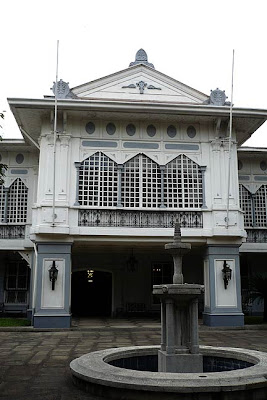

1 comment:
wow! i hope they open this to the public as sort of a museum
Post a Comment